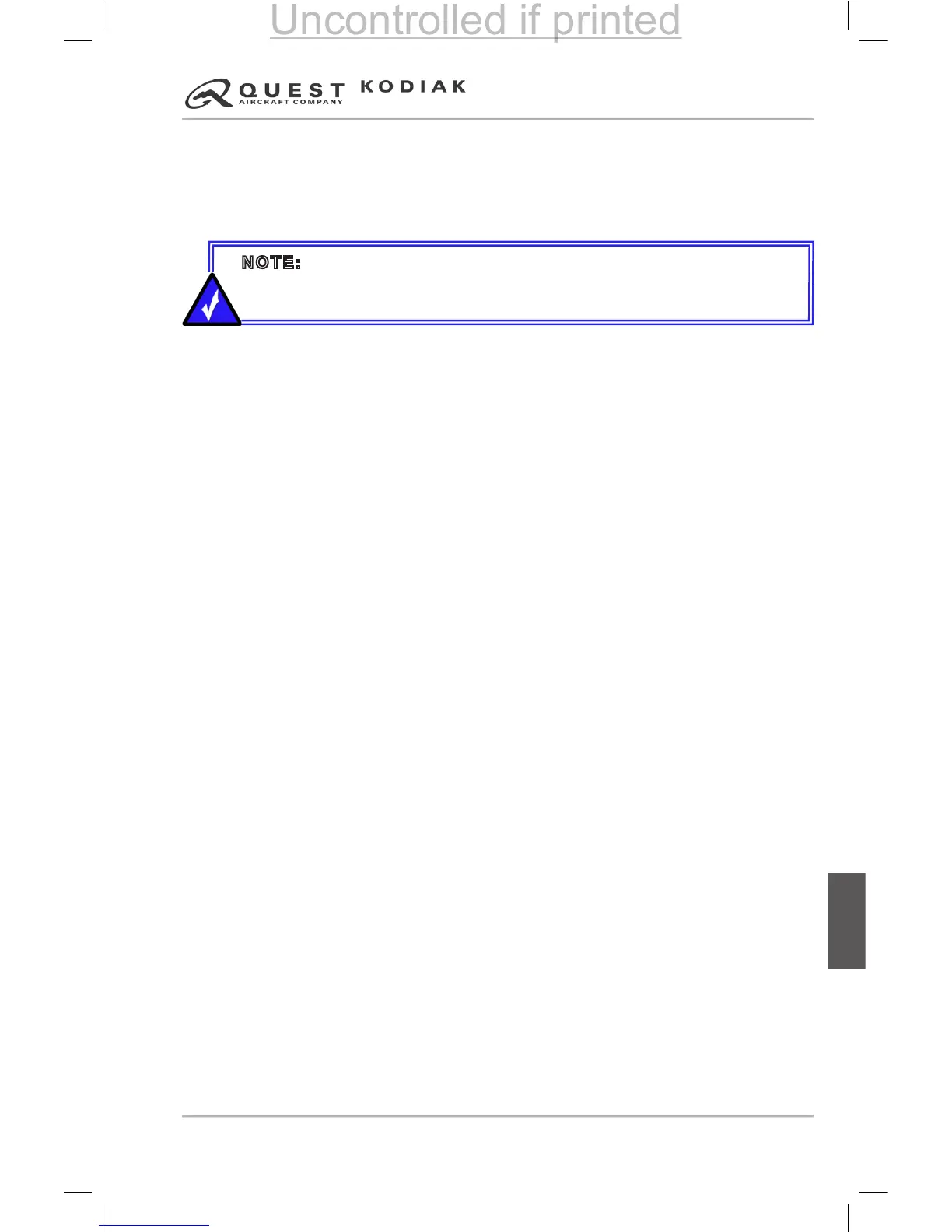7-1 GENERAL
This section of the Pilot’s Operating Handbook provides basic descriptions
and operation procedures for the standard airplane and its systems. Optional
equipment described within this section is identied as “optional” or “if
equipped.”
7-2 AIRFRAME
FUSELAGE
The KODIAK’s semi-monocoque fuselage is constructed of aluminum
bulkheads, stringers, and skins. It is designed to be lightweight, rugged,
aerodynamically efcient, and capable of hauling 9 passengers and/or cargo
into remote locations. The fuselage contains forward and aft carry-through
spars which provide connection ttings for the wings, landing gear, and wing
struts.
WINGS
The externally braced wing structure is constructed of aluminum front and
rear spars, ribs, doublers, and stringers. The wing cross section is a blend
of several high performance airfoils. The outboard cross section of each
wing is designed with a lower angle of incidence to improve roll control near
stall. This design also incorporates a discontinuous leading edge which acts
as a stall fence to help maintain aileron control near stall. The wings contain
integral fuel bays, each providing a capacity of 160 gallons. The integral fuel
bays are formed by the forward and aft spars, upper and lower skins, and
the inboard and outboard closeout ribs. The forward spar provides wing to
fuselage attach ttings and wing to strut attach ttings. The aft spar provides
a wing to fuselage attach tting.
EMPENNAGE
The empennage consists of a horizontal stabilizer, elevator, vertical tail, and
a rudder. All of the empennage components are of conventional construction
containing aluminum spars, ribs, and skins. A dorsal n is attached to the
forward spar of the vertical stabilizer and the upper structure of the fuselage.
The rudder is attached to the vertical stabilizer at three hinge points. The
elevator is constructed as two pieces, connected with a torque tube and
attached to the aft spar of the horizontal stabilizer at seven hinge points.
NOTE: Some optional equipment, primarily avionics, may not be
described in this section. For descriptions and operation procedures for
equipment not provided in this section, refer to “Section 9” of this manual.
